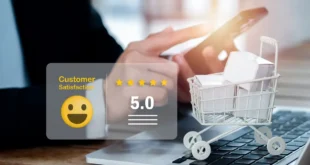In the current fast-paced business world, organizations depend on external vendors to supply crucial goods and services. Managing these partnerships successfully requires a well-structured approach to mitigate potential risks and ensure smooth operations. This is where the Vendor Mangement Office (VMO) comes into play, offering a strategic oversight function for vendor relationships.
A critical aspect of the VMO’s role is vendor risk management, which focuses on identifying and mitigating risks that may arise in vendor collaborations. Utilizing Vendor Management Software (VMS) can greatly enhance this process, making risk management more efficient and comprehensive.
Understanding Risk Management in the Vendor Management Office
Vendor risk management involves systematically identifying, assessing, and controlling the risks associated with engaging third-party vendors. These risks may include financial instability, operational disruptions, non-compliance with regulations, or potential reputational damage.
The ultimate goal of risk management isn’t just to avoid pitfalls but to position the organization to seize new opportunities as well. Vendor Management Software plays an instrumental role in this process by automating risk monitoring and offering real-time insights that enable quick decision-making.
Risk management within the VMO framework is a vital component for maintaining operational stability and promoting long-term organizational success. By integrating VMS into their workflows, companies can simplify risk management tasks, from contract evaluation to performance monitoring, making the VMO more agile and responsive to changes in the vendor landscape.

Why Vendor Risk Management Is Critical
In today’s business ecosystem, the risks posed by vendors are not something to take lightly. A single misstep—whether a vendor fails to meet delivery timelines, experiences financial instability, or falls short of compliance—can have severe consequences. These repercussions can range from financial losses to reputational damage, both of which can severely affect an organization’s bottom line.
By employing effective vendor risk management strategies, businesses can anticipate and mitigate these risks. The use of Vendor Management Software provides an extra layer of security by enabling automated monitoring, real-time reporting, and proactive risk alerts. This helps companies avoid costly mistakes while strengthening relationships with their vendors. Additionally, vendor risk management ensures that companies maintain regulatory compliance and protect their reputation, which is crucial in a competitive marketplace.
Key Components of Vendor Risk Management with VMS
Several essential activities within vendor risk management ensure a company can both secure and optimize its vendor relationships. By leveraging Vendor Management Software, the VMO can enhance the effectiveness of these activities and streamline the overall process.
- Risk identification ─ The first step in managing vendor risks is identifying potential threats, such as financial, operational, strategic, or compliance risks. Vendor Management Software can help automate the identification process, scanning vendor histories and performance data to highlight potential risks early.
- Risk assessment and prioritization ─ After identifying potential risks, the VMO must assess their impact and likelihood of occurrence. This step helps prioritize which risks need immediate action. VMS tools simplify this by assigning risk scores based on historical data, performance metrics, and external factors, helping the VMO prioritize effectively.
- Risk mitigation and control ─ Once risks are assessed, the VMO must develop strategies to minimize or control them. This could involve renegotiating contract terms, adding protective clauses, or diversifying the vendor base to reduce dependency on a single supplier. Vendor Management Software can automate contract management and provide insights to make informed decisions about risk mitigation.
- Continuous risk monitoring ─ Risks must be continuously monitored throughout the vendor relationship. Vendor Management Software enables real-time tracking of vendor performance, flagging deviations from agreed-upon terms or performance benchmarks. This allows the VMO to act quickly if a vendor fails to meet expectations.

Managing Risks Across Different Stages of the Vendor Lifecycle
Different stages of the vendor lifecycle present different types of risks. Being aware of these risks helps organizations make more informed decisions and implement the appropriate controls. Here’s how vendor risks play out at each stage:
- Pre-contracting ─ During the vendor selection phase, risks may arise from engaging vendors with questionable backgrounds, financial instability, or histories of non-compliance. VMS platforms help mitigate these risks by providing comprehensive vendor assessments and historical data reviews.
- Negotiation ─ Risks during this phase include unfavorable contract terms, lack of critical protection clauses, or ambiguous language that could lead to misunderstandings. Vendor Management Software helps standardize contract templates and ensures that all necessary safeguards are in place.
- Execution ─ During contract execution, operational risks, such as delays in delivery, substandard product quality, or communication breakdowns, can surface. VMS tools offer real-time tracking of vendor activities and flag any inconsistencies, ensuring that issues are addressed promptly.
- Termination ─ When it’s time to terminate a contract, risks such as unresolved liabilities, penalty clauses, or difficulties transitioning services to another vendor may arise. Vendor Management Software ensures that the VMO has complete oversight of all contract obligations, making the transition process smoother.
- Post-contract ─ Even after a contract has ended, there may be lingering risks such as unresolved warranty claims or potential legal liabilities. VMS platforms help organizations track these post-contract obligations, ensuring vendors remain accountable for any long-term commitments.
How VMS Enhances Vendor Risk Management
Integrating Vendor Management Software into the VMO’s risk management activities offers several benefits. Here’s how VMS can transform vendor risk management:
- Automated risk detection ─ VMS platforms automatically scan vendor data for potential risks, reducing the time and effort required for manual checks.
- Real-time monitoring ─ VMS provides real-time insights into vendor performance, helping the VMO detect issues before they escalate into bigger problems.
- Data-driven decision making ─ By collecting and analyzing performance metrics, VMS enables the VMO to make data-backed decisions regarding vendor retention, contract renewals, or terminations.
- Streamlined communication ─ VMS fosters clearer communication between the VMO and vendors, ensuring that both parties are aligned on expectations and can quickly address issues.

Strengthening Vendor Relationships Through Risk Management
Effective vendor risk management not only helps reduce potential issues but also strengthens the relationship between the organization and its vendors. When vendors see that a company takes a proactive and structured approach to managing risks, they are more likely to engage in open communication, comply with agreed terms, and collaborate on long-term projects.
Additionally, using Vendor Management Software as part of the risk management strategy creates transparency, which fosters trust. This trust leads to stronger, more cooperative relationships that drive innovation and growth for both parties.
Conclusion
Vendor risk management is a critical function of the Vendor Management Office, and its success is significantly enhanced by the use of Vendor Management Software. By systematically identifying, assessing, and mitigating risks, companies can protect themselves from potential disruptions and ensure that vendor relationships remain secure and mutually beneficial.
Through proactive risk management, supported by real-time data and automated processes, organizations can strengthen their vendor partnerships, reduce costs, and enhance overall performance. In today’s competitive market, the combination of a strong VMO and a robust VMS is the key to long-term success and stability.
 Hi Boox Popular Magazine 2025
Hi Boox Popular Magazine 2025



